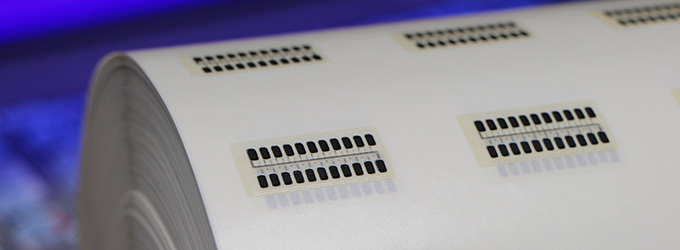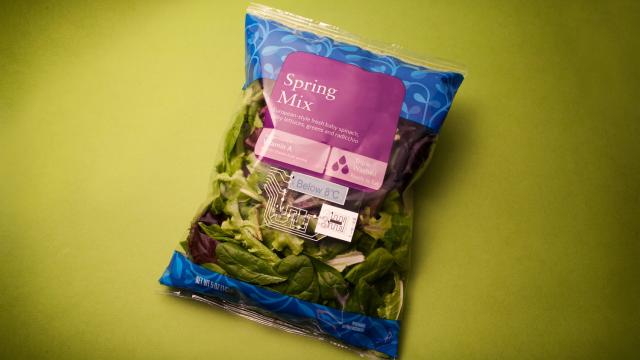When we think about the connected world, we think about hardware — from Twine to Nest — that connects our household appliances to the web for a pretty penny. But according to Quartz, one firm is pioneering an alternative that’s cheap, easy to make and embeddable in nearly any product.
“Think of it as disposable electronics at the edges of web,” says Leo Mirani in a post on the company that’s pioneering the genre, a Norwegian outfit called Thinfilm (tagline: Memory Everywhere). The company makes electronic tags that are printed in conductive ink on thin sheets of adhesive that can be attached to nearly anything, from bags of lettuce to diapers to bedding. The Economist recently compared the technology to a bar code, but it can do more than that.
Because these tags can use near-field communication to communicate with a central hub, they aren’t connect to the internet directly — they’re more like foot soldiers, communicating their statuses on up the ladder. So, for example, Thinfilm’s “memory labels” store data on a film thinner than a human hair. Its “sensor labels” can communicate when the temperature drops. Other tags can display prices or other messages on their faces.

According to Mirani, it’s all about reducing what you really need to create a truly connected world. Thinfilm’s tags are a radically simplistic way to do so, cutting down on the necessary amount of circuitry (and the cost) needed in the average “connected object”:
If you need 40,000 transistors on a chip, you’re better off going to ARM or one of the other more established chip-designers. But if your needs are more basic — a couple of hundred to a couple of thousand — then printed circuitry should do the trick. Indeed, even big chip-makers are realising that the industry may be coming to the end of Moore’s Law, which posits that the number of transistors on a chip will double roughly every 18 months.
It’s a fascinating use of a technology that’s not exactly novel — after all, conductive ink has been used to “draw” circuits for years. But by scaling up the process, companies like Thinfilm are getting closer to connecting objects not only objects that contain hundreds of dollars of electronic innards, but those that might contain nothing electronic at all. [QZ]
